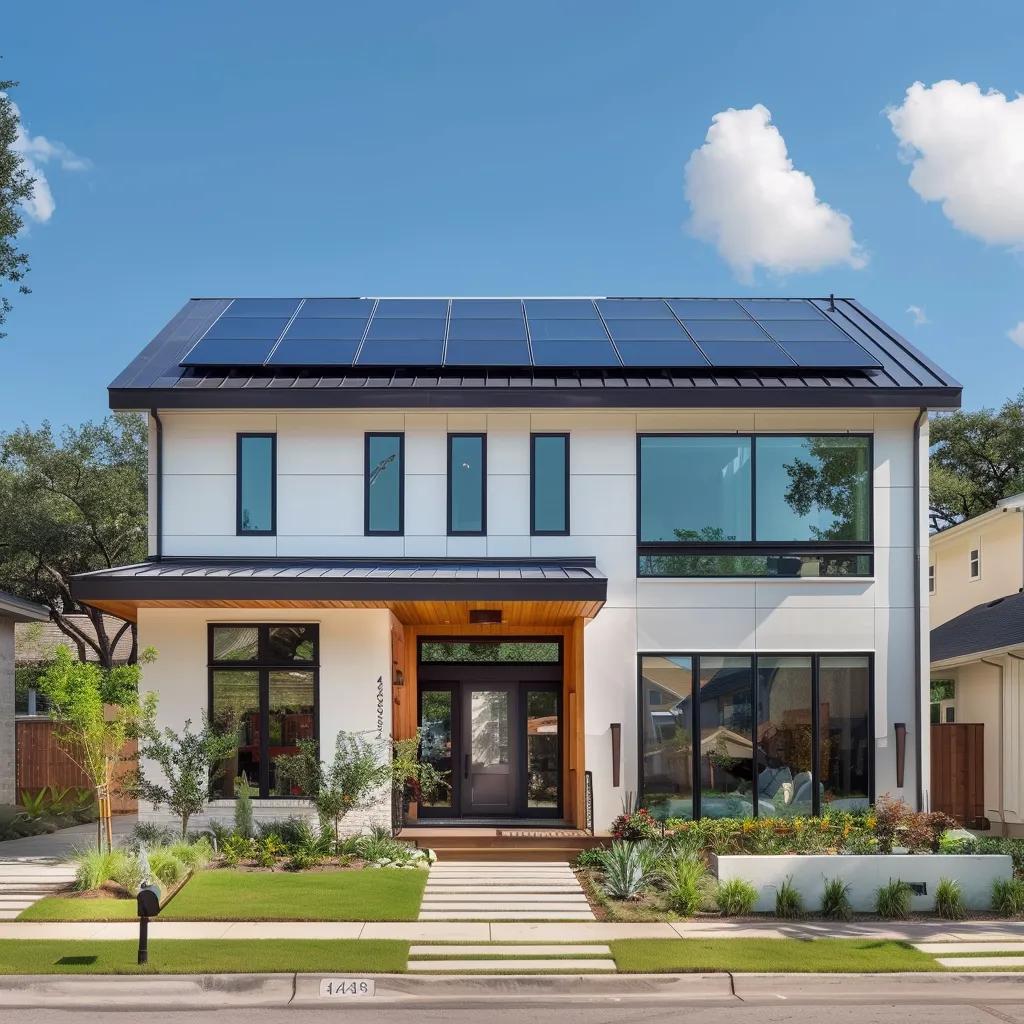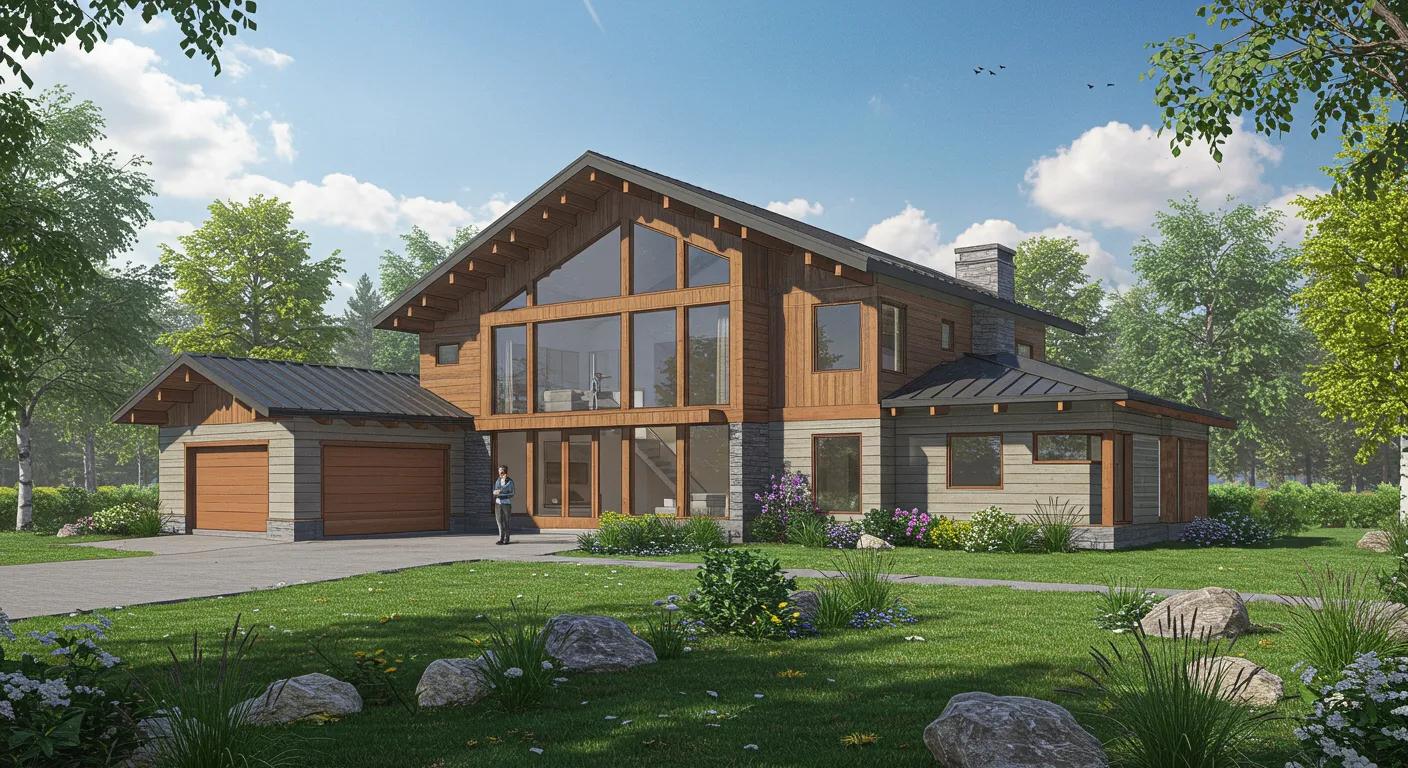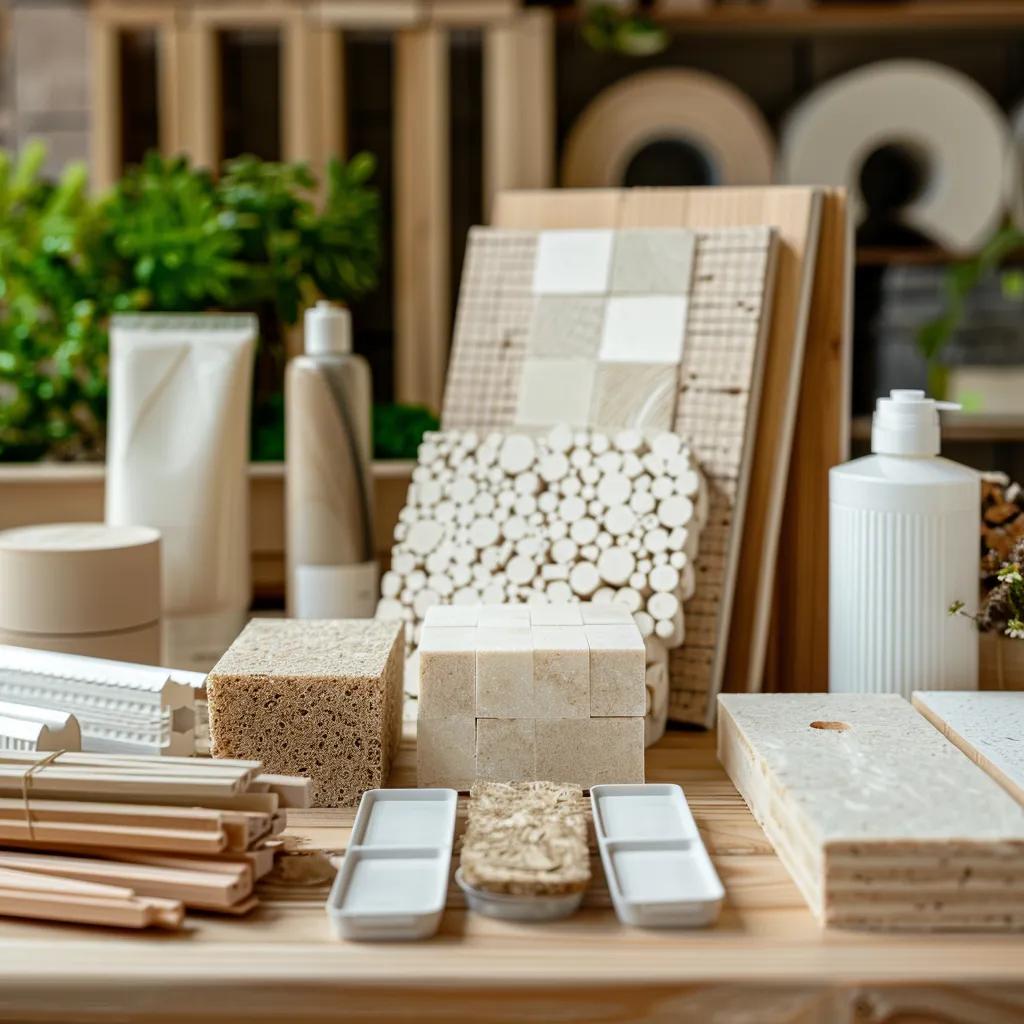
Energy Efficient House Layout Ideas for Sustainable Living
Designing a home that minimizes energy use and maximizes comfort starts with smart layout decisions and proven sustainable strategies. Many Houston families feel overwhelmed by complex design choices and regional climate demands, but optimized floor plans can deliver lower bills, improved comfort, and lasting value. This guide covers five core principles of energy-efficient layouts, top insulation and envelope solutions for Houston’s hot-humid climate, renewable energy and smart-home integration, eco-friendly materials paired with water-saving techniques, green building certifications to validate performance, expert tips for choosing the right custom builder, and the real cost and energy savings you can expect. By following these strategies and connecting with vetted professionals through Custom Builder Connection, Houston homeowners can achieve a truly sustainable living environment.
Key Takeaways
A south-facing layout helps capture winter sun and reduce summer heat gain.
Strategic window placement and natural ventilation lower the need for artificial heating and cooling.
Thermal mass materials help stabilize indoor temperatures throughout the day.
Proper insulation and air sealing are crucial in Houston's humid climate.
Smart home features like automated lighting and energy monitors help maintain efficiency over time.
Choosing a builder with green building experience ensures your layout supports true energy savings.
What Are the Key Principles of Energy-Efficient House Layouts?

Energy-efficient house layouts balance sunlight, airflow, thermal storage, and daylighting to reduce reliance on mechanical heating and cooling. Optimizing orientation for solar gain, placing windows strategically for natural light, integrating thermal mass materials, and harnessing natural ventilation all work together to lower energy demand and enhance indoor comfort. For Houston’s climate, these principles create a resilient foundation for sustainable living.
Core Layout Principles:
Optimal south-facing orientation
Strategic window placement and high-performance glazing
Incorporation of thermal mass for heat storage
Natural cross-ventilation and airflow paths
These layout principles set the stage for specialized building envelope treatments and renewable systems that follow.
How Does Passive Solar Design Optimize Home Orientation?
Passive solar design positions the longest façade facing south to capture winter sunlight and minimize summer heat gain. This orientation uses overhangs and roof eaves to block high summer sun while admitting low winter rays, reducing heating and cooling loads. House plans aligned along the east–west axis further exploit daily sun paths.
Why Is Strategic Window Placement Crucial for Energy Efficiency?
Windows placed to admit diffuse daylight reduce artificial lighting needs and deliver passive solar heating when oriented southward. East- and west-facing glazing require shading devices to prevent overheating, while north-facing windows supply consistent, glare-free light. Properly sized windows with low-E coatings balance daylight benefits with thermal performance.
How Do Thermal Mass Materials Improve Indoor Comfort?
Thermal mass materials such as concrete floors, masonry walls, or water tanks store excess heat during the day and release it at night, smoothing temperature swings. In Houston’s variable climate, thermal mass under shaded overhangs absorbs peak solar heat and moderates indoor temperatures after sunset, reducing HVAC cycling.
What Natural Ventilation Strategies Reduce Cooling Needs?
Cross-ventilation channels breezes through aligned openings on opposite walls, flushing out hot air and cooling living spaces. Stack ventilation uses high clerestory windows or vents to exhaust warm air upward, drawing cooler air in below. Planting shade trees and creating wind corridors around the home amplifies these passive cooling effects.
Which Advanced Insulation and Building Envelope Solutions Work Best in Houston?

High-performance insulation and airtight construction form a protective envelope that keeps conditioned air inside and thermal extremes outside. In Houston’s humid subtropical climate, materials must resist moisture while delivering high R-values. Proper air sealing complements insulation to eliminate drafts and thermal bridging.
What Are the Most Energy-Efficient Insulation Types for Houston Homes?
Closed-cell spray foam offers both high R-value and an airtight seal that resists moisture infiltration, making it ideal for Houston’s humidity. Cellulose provides an eco-friendly alternative with wind-tight installation and recycled content, while fiberglass batts deliver cost-effective performance when paired with meticulous air sealing.
How Do Air Sealing Techniques Enhance Energy Savings?
Sealing gaps around windows, doors, ductwork, and penetrations prevents conditioned air leakage, reducing HVAC runtime by up to 15%. Techniques include spray foam at rim joists, caulking around window frames, and installing gasketed electrical boxes. A blower-door test identifies weak points for targeted remediation.
What Are the Benefits of High-Performance Windows and Doors?
High-performance windows with double or triple glazing, low-E coatings, and insulated frames reduce heat transfer and block UV radiation. ENERGY STAR-rated doors with weatherstripping and thermal breaks cut drafts and moisture entry. Together, they enhance comfort and lower heating and cooling costs.
How Do Radiant Barriers and Roof Designs Contribute to Efficiency?
Radiant barrier foils installed under roof decking reflect solar heat before it enters attic spaces, lowering ceiling and attic temperatures by up to 20°F. Paired with well-ventilated roof assemblies—such as raised-heel trusses and ridge vents—these systems improve attic performance and reduce attic-related loads on the conditioning system.
How Can Renewable Energy and Smart Home Technology Integrate into Sustainable Home Layouts?

Integrating renewable energy generation and automation technology transforms an efficient envelope into a proactive, self-optimizing ecosystem. Solar photovoltaic arrays supply clean electricity, geothermal systems provide stable heating and cooling, and smart devices orchestrate system operation for peak efficiency and occupant comfort.
What Solar Power Systems Are Ideal for Residential Use in Houston?
Roof-mounted photovoltaic panels angled southward maximize sun exposure, while micro-inverters on each panel mitigate shading issues from trees. Battery storage adds resilience during outages and shifts excess solar power to evening hours, reducing peak-period grid draw.
How Does Geothermal Heating and Cooling Work for Houston Homes?
Geothermal heat pumps circulate fluid through buried loops that tap earth’s stable subterranean temperature. In Houston’s moderate soil temperatures, geothermal systems heat by extracting ground warmth and cool by rejecting heat underground, offering consistent performance and lower utility costs.
How Do Smart Thermostats and Lighting Systems Save Energy?
Smart thermostats learn occupant patterns and adjust setpoints for comfort and efficiency, integrating weather forecasts and occupancy sensors to pre-condition spaces only when needed. Automated lighting systems use motion and daylight sensors to switch off unused fixtures and dim lights when natural light is sufficient.
What Are the Advantages of Home Energy Monitoring and Automation?
Real-time energy monitoring identifies high-use circuits and devices, empowering homeowners to correct wasteful habits. Automated controls link solar generation data with appliance scheduling, running heavy loads (e.g., EV charging, pool pumps) when renewable output is abundant.
What Eco-Friendly Building Materials and Water Conservation Strategies Support Sustainable Living?

Choosing materials with low environmental impact and installing efficient water systems reduce the home’s carbon and water footprints. Reclaimed and recycled products, low-VOC finishes, water-saving fixtures, rainwater harvesting, and drought-tolerant landscaping create a holistic sustainable design.
Which Eco-Friendly Building Materials Are Best for Custom Homes?
Recycled steel and reclaimed wood reduce embodied carbon, while low-VOC paints, sealants, and finishes improve indoor air quality. Structural insulated panels (SIPs) combine high R-value with minimal waste, accelerating construction and enhancing envelope consistency.
How Do Water-Efficient Plumbing Fixtures Reduce Consumption?
Water Sense-labeled faucets, showerheads, and dual-flush toilets deliver equal performance with significantly lower flow rates. Pressure-balanced valves and leak-detecting shut-off valves prevent water waste and damage.
What Are Effective Rainwater Harvesting Systems for Houston Homes?
Gutter-linked cisterns capture roof runoff and filter debris, supplying irrigation or non-potable indoor uses. Overflow connections manage stormwater on-site, reducing municipal demand and flooding risks.
How Does Drought-Tolerant Landscaping Enhance Sustainability?
Xeriscaping uses native, drought-adapted plants that thrive with minimal supplemental watering. Mulch, drip irrigation, and strategic plant placement around shade-giving trees further reduce landscape water needs and moderate building microclimate.
What Green Building Certifications Validate Energy-Efficient Home Designs?

Recognized certifications benchmark performance and convey transparency to homeowners and buyers. ENERGY STAR, LEED for Homes, and the HERS Index each apply rigorous criteria for envelope, equipment, resource use, and indoor environmental quality.
Benefits of Green Building Certifications
Green building certifications, such as ENERGY STAR and LEED, provide a benchmark for energy performance and can increase a home's resale value. Certified homes often command price premiums, reflecting the value buyers place on lower operating costs and improved comfort.
What Is ENERGY STAR Certification and Its Benefits?
ENERGY STAR for Homes requires third-party verification of insulation, air sealing, HVAC performance, and window quality. Certified homes save an average of 15–20% on utility bills and qualify for incentives such as utility rebates.
How Does LEED Certification Apply to Residential Properties?
LEED for Homes awards points for sustainable site development, water efficiency, energy performance, materials selection, and indoor air quality. Higher levels (Silver to Platinum) reflect deeper sustainability practices and may unlock tax credits or financing advantages.
What Does the HERS Index Rating Indicate About Home Efficiency?
The Home Energy Rating System (HERS) Index scores a home’s projected energy use; a lower score indicates greater efficiency. Each 1-point reduction on the 0–100 scale translates to a 1% improvement over the reference home.
What Are the Long-Term Benefits of Owning a Certified Green Home?
Certified green homes command higher resale values, often selling for 9–24% premiums. Owners enjoy improved comfort, healthier indoor air, predictable utility costs, and potential insurance discounts.
How Can Houston Homeowners Choose the Right Custom Builder for Energy-Efficient Homes?

Selecting a builder with proven green credentials ensures that sustainable design principles and advanced systems translate from plans into reality. Homeowners should evaluate certifications, track records, and local expertise in Houston’s climate challenges, then leverage professional matchmaking services for trusted connections.
What Qualifications Should You Look for in a Green Home Builder?
Seek certifications such as Certified Green Professional (CGP), LEED AP, or ENERGY STAR® Builder. Verify experience with high-performance envelope assembly, passive solar integration, and renewable system install.
How Does Custom Builder Connection Simplify the Selection Process?
Custom Builder Connection connects Houston homeowners with vetted custom builders specializing in energy-efficient and sustainable construction. This free service streamlines interviews, vetting, and proposal comparisons to reduce decision fatigue and risk.
What Are Common Challenges When Building Energy-Efficient Homes in Houston?
Houston’s hot-humid summers and variable rainfall require meticulous moisture management, robust HVAC sizing, and termite-resistant materials. Local code requirements and utility rebate processes add complexity to project planning.
What Are the Cost and Energy Savings of Energy-Efficient House Layouts?
Energy-efficient layouts combined with high-performance systems deliver measurable savings on utility bills, boost property value, and yield health and comfort improvements. Homeowners typically see ROI through reduced energy costs, premium resale pricing, and greater indoor environmental quality.
Key Savings and Benefits:
20–50% reduction in heating and cooling bills
10–20% increase in home resale value
Improved indoor air quality and thermal comfort
10–15% additional savings via smart automation
Energy Savings from Efficient Homes
Energy-efficient homes can significantly reduce utility bills, with potential savings of 20-50% compared to homes built to minimum code standards. This translates to substantial annual savings, particularly in regions like Houston, where energy costs can be high.
How Much Can Energy-Efficient Homes Save on Utility Bills?
Well-designed passive and envelope strategies, coupled with efficient systems, can cut annual utility costs by 20–50% compared to code-minimum homes. In Houston, this often translates to $1,200–$2,500 saved per year on electricity and gas.
How Does Energy Efficiency Increase Home Market Value?
Certified green homes command price premiums between 9% and 24% over comparable properties. Buyers recognize lower operating costs, higher comfort, and validated performance, making efficient homes more desirable.
What Health and Comfort Improvements Do Energy-Efficient Homes Offer?
Tightly sealed, well-ventilated homes with low-VOC materials and balanced humidity control minimize allergens, pollutants, and mold risk. Consistent indoor temperatures and proper daylighting enhance occupant well-being and productivity.
How Do Smart Technologies Contribute to Ongoing Savings?
Automation platforms synchronize renewable output, HVAC operation, and lighting controls to minimize waste. Real-time monitoring encourages behavior changes that yield an additional 10–15% in yearly energy savings.
Frequently Asked Questions
What are the initial costs associated with building an energy-efficient home in Houston?
Building a high-performance home may cost 5–15% more upfront due to better insulation, windows, and renewable systems. However, lower energy bills and potential rebates can help offset these costs over time.
How can homeowners ensure their energy-efficient home remains efficient?
Regular maintenance of insulation, windows, HVAC systems, and smart controls keeps performance high. Sealing air leaks and upgrading appliances can also protect long-term energy savings.
What role does landscaping play in energy efficiency?
Strategically placed trees, shrubs, and native plants reduce direct sun exposure and help cool your home naturally. Drought-tolerant landscaping also cuts water use and supports sustainability.
Are there specific building codes or regulations in Houston for energy efficiency?
Yes, Houston follows the International Energy Conservation Code (IECC) and has guidelines for insulation, HVAC efficiency, and window performance. Some energy-efficient homes may qualify for rebates or tax incentives.
What environmental benefits come from building an energy-efficient home?
Efficient homes use less energy and water, leading to lower greenhouse gas emissions and reduced strain on local resources. Using recycled materials and low-VOC finishes also supports a healthier indoor environment.
How can I assess my current home's energy efficiency?
Schedule an energy audit to check insulation levels, air leaks, and system performance. Tools like thermal imaging and blower door tests help pinpoint areas that need improvement.
What financing options are available for energy-efficient upgrades?
Homeowners can explore green mortgages, energy improvement loans, and rebate programs. These options help cover the cost of upgrades while improving long-term energy savings and comfort.
Conclusion
Investing in an energy-efficient layout is one of the smartest ways to design a home that performs well in Houston’s demanding climate. Homeowners can lower their energy bills and increase daily comfort by focusing on passive solar design, proper airflow, high-efficiency materials, and smart technology. Whether you're building from the ground up or making improvements, working with experienced professionals who understand Houston’s conditions will help you create a truly sustainable home that pays off for years to come.


